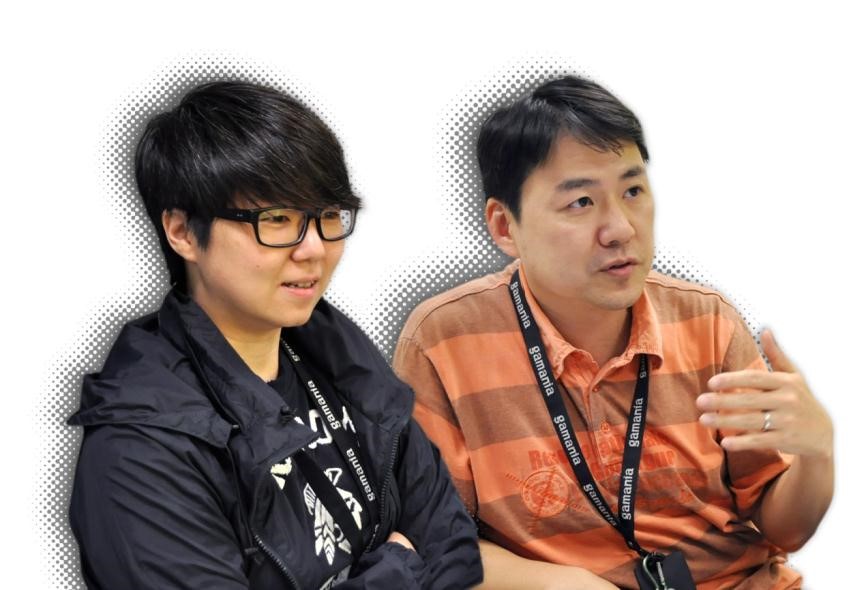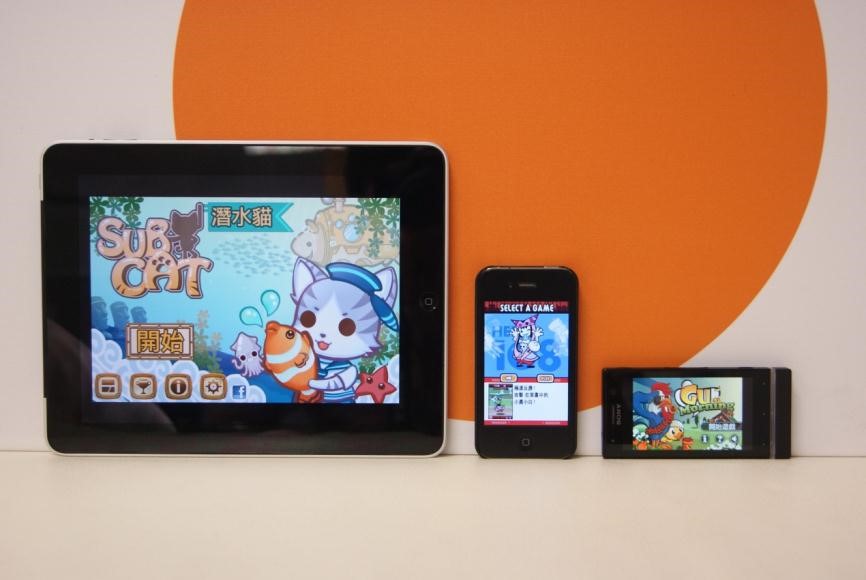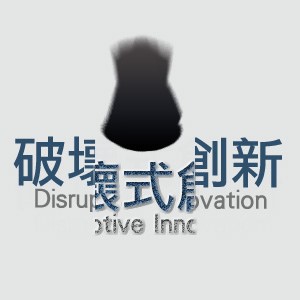
▲Gamanian observers from marketing and technology perspectives: Bea (left) and Gilbert (right).
Facing the rapid changes in the global market, are you fully prepared? G!VOICE interviewed Gamanian observers who possess of keen market senses, Bea and Gilbert, to share their observations on the marketing and technology aspects of digital entertainment market. Still haven’t caught up with the trend? Let’s hear what they have to say!
Observation from the Marketing Perspective: GOBU3 of GTW, Bea Wang

▲GTW-GOBU3-Bea Wang(王蘭君)
Rapid Changes in the Market: Are You Ready?
Judging from the game companies who participated in the exhibitions, web game and mobile game have grown rapidly, reaching double digit growth in recent years. On the contrary, the growth of client game has decreased, marking a 5-8% growth. Many reasons have contributed to such change: more mature internet technology, the exquisiteness of game scenes, the structure of the game, easier and more accessible application language that could satisfy players’ basic demands. Digital devices are more diversified, new smart phones and iPad being launched. The internet connection has also become faster and cheaper. These factors enable players with many more choices. Client games have lost its competitive edge. Other types of games such as web games and mobile games occupy players’ time and are free and easy to use. It is safe to compare digital entertainment market to the ‘warring states period’ in ancient China. How client games emphasize the depth and width of its product has become the most important issue.

▲In recent years, web games and mobile games have increased rapidly, attributing to double digit growth.
Facing a Saturated Market, ‘Prime Product’ is the Way to Go
Facing a fiercely competitive market, consumers have myriads of choices. Client games need to emphasize advantages and elevate from the perspectives of ‘product innovation’ and ‘word-of-mouth user experience’. Nowadays, marketing 3.0 means combining product innovation and consumer recognition and letting go of the traditional linear product promotion. Moreover, added with the new product launch, the campaign could successfully convey 1+1>2 effect and retrieve the time players once spent on client games.
Product innovation is definitely the crucial factor. Judging from current new product success rate, well-known products or products with high anticipation possess of great advantage. Market then becomes secondary. Innovative game content enables players to have great experiences and ‘word-of-mouth user experience’ also increases. Consumers would rapidly pass on such information on community platforms which creates potential audiences and achieve marketing effect. If we could internet with players with first-hand official information, instead of communicating through customer service system, players tend to stay longer and come back more. The word-of-mouth effect achieved through online communities also tends to be bigger than promotional campaigns.
Keeping ‘People’ is Far Important than Revenue
People love to share a topical and positive product with friends and the sustainability of the product also increases. This is an important indicator for product development. Like I mentioned before, ‘prime product’ is a good product. It doesn’t aim at becoming the ‘it’ topic in the short term, but long term brand building. It has to build up something that players could identify with and feel ‘belonged’. This kind of ‘attachment’ exceeds beyond merely the duration of the stay. Players don’t have to stay in the game for a long time, but ‘login in’ the game has become a ritual for them, even if they just hang out there for a while. This suggests a sense of belonging and recognition for the game. Naturally, they would draw in friends to join this world. This idea is identical to the concept of ‘community’.
The power of community is an important lesson for operation right now. We care less about which channels we could advertise or what campaigns to hold but more about the analysis of the loss of players, and understand why players are loyal to certain products, how they remain popular through time and how we could improve our system etc. We want the same thing as our original developer—provide fun games. Since last year, GTW shifted its focus on the ‘number of people’. It is only when you provide a fun game to enable player experience and increase willingness to stay, can you increase consumers’ willingness to pay—a natural result.
The contest of CSO and Maple Story was an example of solidifying the community and created coherence. We triggered consumers’ identification towards the brand, from inside out. We should fully utilize the existing advantage of client games and expand outwards like a circle. If we grab onto the element of ‘people’ in developing web games and mobile games in the future, I believe we could achieve great standard in terms of brand stability and profitability.

▲CSO contest was held during beanfun! National Open as part of Beanfun! Summer Carnival in the first half 2012.
Communication Beyond Products
In the virtual warring states period, many technology companies all try to have their shares in the market. Consumers started to select the brand that provides the best service. Consumers often base their consideration on big game companies, such as their services, how they manage communities, communication with consumers and even their result in catching online cheaters. There are more and more review and evaluation articles about the companies on consumer platforms. In other words, consumers are willing to purchase services. If they don’t have many choices, they could only choose to accept whatever available. However, consumers have a lot more choices in the current market. ‘Service quality’ is also an integral part of a prime product. Consumers tend to trust the quality of the product from a reputable company and are willing to spend more time learning about new messages, experience the products and even recommend to others.
Observations from the Technology Perspective: Feature Interview with Senior Technology Supervisor

▲GHQ-CRO-Gilbert Hsieh(謝宗宏)
Incorporating Digital Entertainment into Life Facing the digitalized market, the definition of ‘entertainment’ becomes wider and wider. Facebook viewing, video watching and internet surfing become more and more convenient which also divides users’ time spent on the internet. People still spend the same amount of time on the internet, but they have many more things to do. The conventional online games are quite addictive, players with ‘limited free time’ could now choose to play simple games that are easy to access and exit. These games are no-brainers: players don’t need to spend time cultivating or forming legions. These ‘stupid games’ became the new trend and in the meantime, their low price sabotages the market price.

▲Simple games that are easy to access and exit become the new entertainment choice for those players with limited free time.
The Importance of Cross-Platform Technology
In terms of transferring the attributes and content of the games across different platforms, the different usage in different devices must be considered, such as the size of the screen, internet speed, timing etc, instead of transplanting everything from head to toe. If we could consider brand identification and achieve visual coherence, this would be sufficient to establish brand image. Simply put, a classic game may be presented perfectly on a PC but when presented on the mobile phone, you could only select a few simple ‘game units’ to produce the mobile version. Of course, these units must incorporate the ‘easy to access and exit’ feature of mobile games. Moreover, the updated information could be linked to the PC to achieve effective cross-platform result. For example, investing time to cultivate grades and accumulate levels are dull, repetitive actions that need to be repeated for MMORPG, if players could do that ‘wherever and whenever’ they are, and these data could be synchronized online, I’m sure the players would love to use it.
The Convenience of User Experience

▲Battlestar Galactica Online is a MMO game. Based on the story developed by TV series, Battlestar Galactica (2004), this game adopted unity game development tool and was released on February 8, 2011.
Battlestar Galactica Online came as a shocker for me. From joining in to playing the game, in less than 10 minutes, I was wowed by its user experience. Rapid user experience is an important indicator for online games as well as an important factor for market dominance for web games and mobile games. In recent years, many emerging games collaborated with other social platforms and linked accounts to help users to experience the product in a timely manner. Once the consumers buy in the product, they would become members. The result tells us that a product needs to be competitive in a market. In the meantime, it shows that making users contact the product speedily is the most basic strategy of web games and mobile games. A classic game could afford leave out certain functions. If they could apply this concept, then perhaps the promotion would be more effective.
Curiosity is the Drive of Innovation

The term, Disruptive Innovation was coined by Clayton Christensen. His theory gave an alternative interpretation to the word, innovation in the business world and changed the competitive mode among corporations. In his theory, the strong one doesn’t necessarily get stronger and the new comer doesn’t necessarily stay in a weak position. His renowned innovation trilogy are The Innovator’s Dilemma, The Innovator’s Solution, and The Innovator’s Prescription.
There are complicated factors that attribute to the variation of the market, so don’t just focus on the things you like. Information is being transported in lightening speed, consumers’ demands also evolve with time, we cannot merely examine demand’ to seek solutions. Sometimes, we need disruptive creativity, disrupt ‘price’, ‘routine’ and ‘mechanism’ to create something that has never been developed in the market. Such disruption could trigger consumers’ curiosity to experience and set up a trend. Gamania has done many brilliant disruptive innovation such as introducing the game, “Convenience Store’ with very low price to the convenience store channel in Taiwan for the first time; introducing online game ‘Lineage’ in Taiwan’s market for the first time as well as the first in the industry to use Item Mall payment system for the game, The Great Merchant.
Consumers take ‘continuous’ innovation for granted, for example, the smart phones are getting lighter and lighter, the quality of TV becomes better and better etc. Consumers think that these are the developments that should progress with technological advancement. However, iPod changed people’s habit of listening to music and replaced CD. iPhone changed people’s behavior in using mobile phones. These disruptive innovations make this company the top company in the world. The same concept applies to us. We are in the digital entertainment industry, we should be curious and observe the market continuously. Thinking about the demands around you, be it at work or in your leisure time, and let your imagination and curiosity run wild. These little precious moments in your life may well become the next super creativity that dominates the market trend.
Source of pictures:
www.kotaku.com.au
http://skenyeh.blogspot.com
Reference:
http://techchilijung.wordpress.com
Wikipedia
